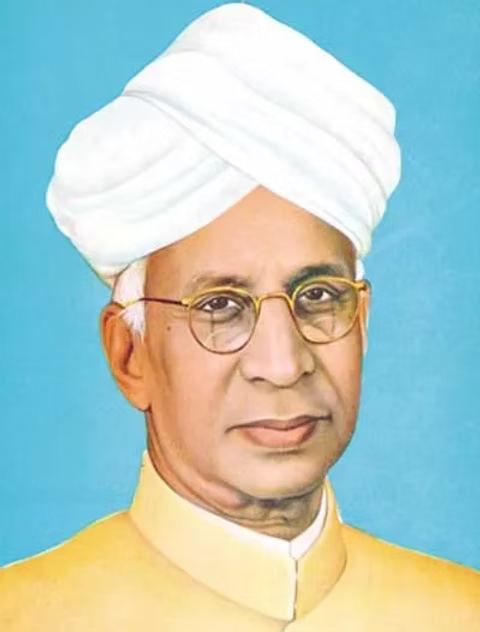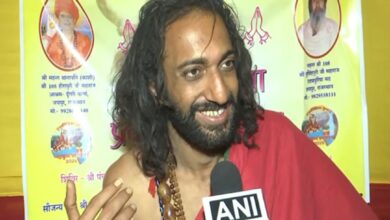Sarvepalli Radhakrishnan Biography, Wikipedia, Family, Wife, Career, Net Worth, Death
Sarvepalli Radhakrishnan (1888–1975) was an Indian philosopher, educator, and statesman who served as the second President of India (1962–1967). Renowned for his work in comparative religion and Indian philosophy, he helped bridge Eastern and Western thought. Before his presidency, he was Vice President of India and Ambassador to the Soviet Union.
Profile
| Aspect | Details |
|---|---|
| Full Name | Sarvepalli Radhakrishnan |
| Birth | September 5, 1888 – Tiruttani, Tamil Nadu, India |
| Death | April 17, 1975 – Madras (now Chennai), India |
| Profession | Philosopher, Educator, Statesman |
| Key Contributions | Introduced Indian philosophy to the West; Expert in comparative religion |
| Major Works | The Philosophy of Rabindranath Tagore, Indian Philosophy, The Hindu View of Life |
| Political Roles | – Ambassador to the Soviet Union (1949–1952) – Vice President of India (1952–1962) – President of India (1962–1967) |
| Education | Madras Christian College |
| Philosophical Focus | Advaita Vedanta, Comparative Religion |
| Honors | Bharat Ratna (1954) |
| Legacy | His birthday, September 5, is celebrated as Teacher’s Day in India |
Early Life and Family
Dr. Sarvepalli Radhakrishnan was born on September 5, 1888, in Tiruttani, a small temple town in the Madras Presidency (now Tamil Nadu, India), into a Telugu-speaking Niyogi Brahmin family. His father, Sarvepalli Veeraswami, was a subordinate revenue official serving a local zamindar, and his mother, Sarvepalli Sita, was a homemaker. The family hailed from Sarvepalli village in Andhra Pradesh’s Nellore district. Radhakrishnan was the fourth of six siblings, growing up in modest circumstances in the towns of Thiruttani and Tirupati. Despite financial constraints, his intelligence and determination paved the way for a remarkable academic journey.
At the age of 16, Radhakrishnan married his distant cousin, Sivakamu, in May 1903, following traditional arrangements. The couple enjoyed a happy marriage that lasted over 53 years until Sivakamu’s death in 1956. They had six children: five daughters (Padmavati, Rukmini, Sushila, Sundari, and Shakuntala) and one son, Sarvepalli Gopal, who later became a distinguished historian, authoring biographies of his father and Jawaharlal Nehru. Radhakrishnan’s family members pursued diverse careers in academia, public policy, medicine, law, and more. Notably, former Indian cricketer VVS Laxman is his great-grandnephew.

Sarvepalli Radhakrishnan Education
Radhakrishnan’s academic brilliance shone early, earning him scholarships throughout his education. He began his schooling at K.V. High School in Thiruttani, later attending the Hermannsburg Evangelical Lutheran Mission School in Tirupati and the Government High Secondary School in Walajapet (1896). He pursued high school at Voorhees College in Vellore and, at 17, enrolled at Madras Christian College, where he earned his Bachelor’s (1904) and Master’s (1906) degrees in philosophy.
Initially interested in mathematics, Radhakrishnan studied philosophy by chance after receiving hand-me-down philosophy textbooks from a cousin. His bachelor’s thesis, The Ethics of the Vedanta and Its Metaphysical Presuppositions, addressed criticisms that Vedanta lacked ethical foundations. Praised by professors Rev. William Meston and Dr. Alfred George Hogg, the thesis was published when he was just 20, marking the start of his intellectual legacy.
Sarvepalli Radhakrishnan Career
Radhakrishnan’s career spanned academia, philosophy, and politics, earning him global recognition as a bridge-builder between Eastern and Western thought.
Academic Career
In 1909, Radhakrishnan began teaching at the Department of Philosophy at Madras Presidency College. He later joined the University of Mysore (1918) as a professor at Maharaja’s College and was appointed the King George V Chair of Mental and Moral Science at the University of Calcutta (1921–1932). His lectures, including the Hibbert Lecture at Oxford (1929), showcased his ability to simplify complex ideas. In 1931, he was knighted by the British Crown (a title he relinquished post-independence) and served as Vice-Chancellor of Andhra University (1931–1936).
From 1936 to 1952, Radhakrishnan was the Spalding Professor of Eastern Religions and Ethics at Oxford University and a Fellow of All Souls College. He also served as Vice-Chancellor of Banaras Hindu University (1939–1948) and briefly Delhi University. His work, including books like The Philosophy of Rabindranath Tagore and Indian Philosophy, introduced Indian philosophy to the West, earning him 27 Nobel Prize nominations (16 for Literature, 11 for Peace).
Political Career
Radhakrishnan entered politics later in life. He represented India at UNESCO (1946) and was elected to the Constituent Assembly. From 1949 to 1952, he served as India’s Ambassador to the Soviet Union, followed by his tenure as India’s first Vice President (1952–1962). As the second President of India (1962–1967), he emphasized education and culture, upholding democratic values. His dignified leadership left a lasting impact.
Philosophical Contributions
Radhakrishnan’s philosophy was rooted in Advaita Vedanta, which he reinterpreted for modern audiences. He defended Hinduism against Western critiques, emphasizing its ethical and intellectual viability. His works, such as An Idealist View of Life and Eastern Religions and Western Thought, blended Indian and Western philosophical traditions, fostering mutual understanding. He believed education was a transformative tool for social reform and advocated for a pluralistic, secular society.
Sarvepalli Radhakrishnan Net Worth
There is no definitive record of Sarvepalli Radhakrishnan’s net worth, as his life was dedicated to academia, public service, and philosophy rather than personal wealth accumulation. Born into a modest family, he relied on scholarships and academic salaries. His roles as Vice President and President of India came with official stipends, but he lived a simple life, prioritizing intellectual and societal contributions over material gain.
Death
Dr. Sarvepalli Radhakrishnan passed away on April 17, 1975, in Chennai, Tamil Nadu, at the age of 86. His death marked the end of an era, but his legacy endures through his contributions to education and philosophy.
Legacy and Teachers’ Day
Radhakrishnan’s birthday, September 5, is celebrated as Teachers’ Day in India, a tradition he proposed in 1962. When students and admirers wished to celebrate his birthday, he suggested honoring teachers nationwide instead, reflecting his belief that “teachers should be the best minds in the country.” He was awarded the Bharat Ratna (1954), the Order of Merit (1963), and other international honors, including Germany’s Pour le Mérite and Mexico’s Order of the Aztec Eagle.
READ ALSO: Nick Vujicic Biography, Wikipedia, Family, Wife, Career, Net Worth, Cars
FAQs
Why is Teachers’ Day celebrated on September 5?
Teachers’ Day is celebrated on September 5 to mark Dr. Sarvepalli Radhakrishnan’s birthday. He suggested commemorating the day to honor teachers’ contributions to society instead of celebrating his birthday personally.
What was Dr. Radhakrishnan’s contribution to philosophy?
He reinterpreted Advaita Vedanta for contemporary audiences, defended Hinduism against Western critiques, and bridged Eastern and Western philosophies through works like Indian Philosophy and An Idealist View of Life.
What roles did Dr. Radhakrishnan hold in Indian politics?
He served as India’s Ambassador to the Soviet Union (1949–1952), the first Vice President (1952–1962), and the second President (1962–1967).
How many children did Dr. Radhakrishnan have?
He had six children: five daughters (Padmavati, Rukmini, Sushila, Sundari, and Shakuntala) and one son, Sarvepalli Gopal, a noted historian.
What awards did Dr. Radhakrishnan receive?
He received the Bharat Ratna (1954), a knighthood (1931), the Order of Merit (1963), Germany’s Pour le Mérite (1954), and Mexico’s Order of the Aztec Eagle (1954).



